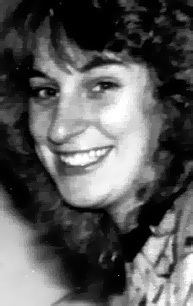 | ||
Janine Kerrie Balding was a homicide victim who was abducted, raped and murdered by a homeless gang of five (four youths and an adult) on 8 September 1988, in Sydney New South Wales, Australia. Balding's murder is often compared to the notorious 1986 murder of Sydney nurse Anita Cobby.
Contents

Early life
Janine Balding was born on 7 October 1967 and lived in Wagga Wagga, New South Wales before moving to Sydney and gaining employment as a teller at a branch of the then State Bank of New South Wales on George Street. She was due to marry her fiancé Steven Moran in March 1989. The couple had purchased a house in Berkeley Vale and rented out that house to help finance their wedding.
Abduction and murder
A month before her twenty-first birthday, she was abducted from a Sutherland railway station car park by a group of homeless persons consisting of four males and one female.
These persons were Bronson Blessington, Matthew Elliott, Stephen 'Shorty' Jamieson, Wayne Wilmot and Carol Arrow.
Blessington had met Jamieson and Elliott at a homeless shelter named 'The Station' in the Sydney CBD earlier that day and had proposed "Why don't we get a sheila and rape her?", a quote which become infamously known through Australian news media. The idea was agreed to. Arrow and Wilmot joined in. The victim, who was to be picked at random, became Janine Balding.
She was driven in her vehicle to the side of the F4 Freeway at Minchinbury in Sydney's west, and during that time was partially stripped of her clothing and raped at knifepoint by Blessington, Jamieson and Elliott. Arrow and Wilmot were in the car but did not rape her. On arrival at Minchinbury, she was again raped. She was then dragged from her vehicle, gagged with a scarf, hog-tied, then lifted over a fence and carried into a paddock by Blessington, Jamieson and Elliott. She was then drowned in a dam there.
Convictions
All five members of the group were arrested and charged over the murder and each faced court. After weeks of deliberations and testimonies, Elliot, Blessington and Jamieson were each given life sentences, while Wilmot was sentenced to 7.5 years in jail and Arrow released on a good behaviour bond because the pair didn't participate in the rape and murder of Balding.
The sentencing of Blessington and Elliot became a topic of extreme controversy, because at the time they committed the murder and were sentenced, they were aged 14 and 16 respectively - becoming the youngest killers in Australia to be convicted and given the maximum sentence for murder.
In sentencing the defendants, Justice Newman said:
To sentence people so young to a long term of imprisonment is of course a heavy task. However, the facts surrounding the commission of these crimes are so barbaric that I believe I have no alternative other than to impose upon [these] young prisoners, even despite their age, a life sentence. So grave is the nature of this case that I recommend that none of the prisoners in the matter should ever be released.In 2007, Elliott and Blessington were granted an additional appeal based on a staple missing from their files. Essentially, it was argued, because the Crown indictment was not stapled to the court file, it was not "fixed" to the court file as required by law and the judgement was therefore not technically finalised. The High Court of Australia subsequently rejected this ground of appeal.
Further developments
In 1998, Wayne Wilmot returned to prison for seven years after an attempted abduction and rape of a young girl in western Sydney just two years after being released for time served over the accessory to murder of Janine Balding. Wilmot was then linked to an earlier attack on a 19 year old woman at Leightonfield after undertaking a DNA testing program for prisoners.
In 2003, the NSW Innocence Project (a joint project by the NSW Police Force, the Office of the Director of Public Prosecutions and the Privacy Commissioner) used the latest DNA techniques to review the DNA evidence of the crime. This was done because Stephen 'Shorty' Jamieson denied taking part in the murder, and one of the murderers had claimed that it was 'Shorty' Wells (rather than 'Shorty' Jamieson) who had committed the murder.
The DNA results demonstrated that Jamieson's DNA was not found in a rectal swab taken from the victim at autopsy, and neither was the DNA of Wells. Police Minister John Watkins announced that the NSW Innocence Project would be suspended. Subsequently, Arrow stated that Jamieson was one of the murderers.
In late October 2014 the United Nations Human Rights Committee ruled that the sentences of Blessington (then 14) and Elliott (16) breached the International Covenant on Civil and Political Rights and the UN Convention on the Rights of the Child. The Committee asked the Australian Government to "review the case and remedy the human rights breach".
In February 2016, Blessington lodged an appeal to be released from prison given he was only 14 at the time he committed the murder. Blessington claimed "he found God", that he was remorseful for his actions and was a changed man. Despite these claims, Janine's family reported that nearly three decades on from the murder it has not received any formal apology or letter from Blessington expressing such remorse and did not believe he had changed.
